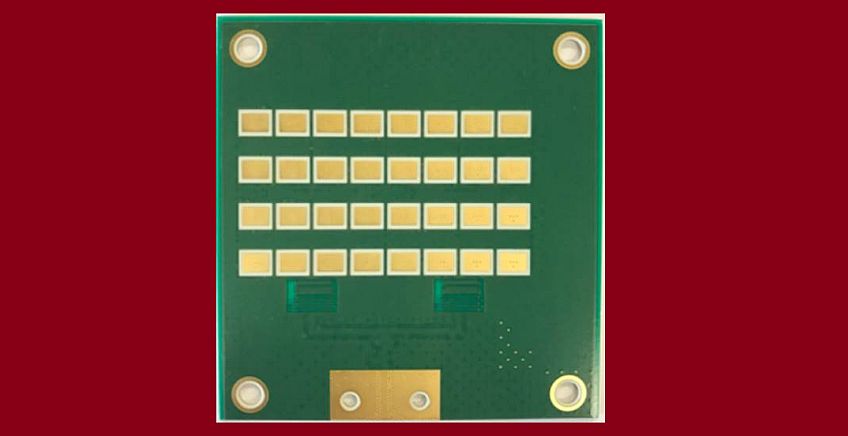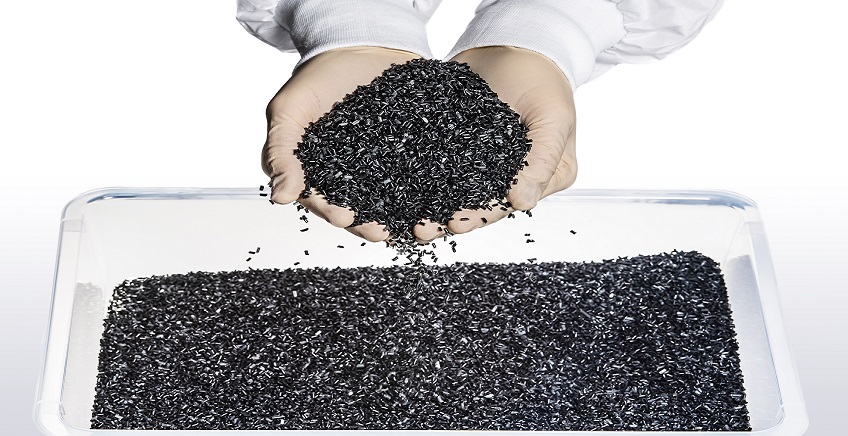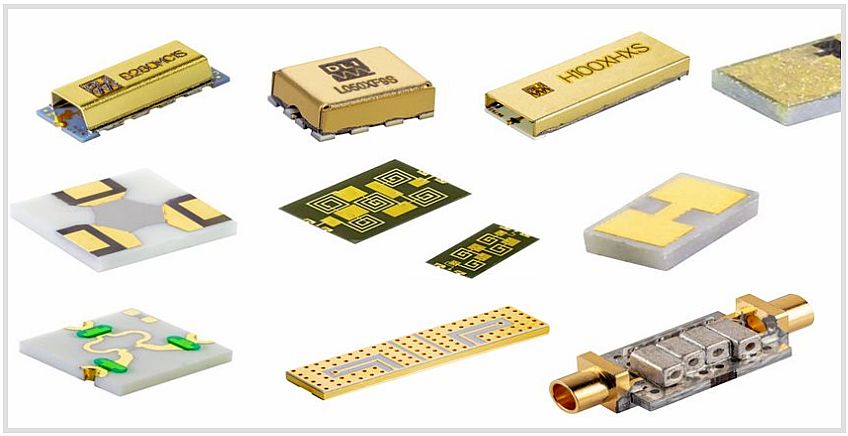TowerJazz and UCSD showed 5G Transmit-Receive Chips with 12Gbps Data Rates
25 February, 2017
The new design Design targets FCC plans for licensing 28GHz communications band for the use of 5G communication. I consists of Phased array technology and was manufctured in TowerJass's SiGe SBC18H3 process

TowerJazz from Migdal-Haemeq, Israel, and the University of California San Diego, succeed for the first time to demonstrate a greater than 12 Gbps, 5G phased-array chip set. The chipset (Photo above) operates at 28 to 31 GHz and uses TowerJazz’s high volume SiGe BiCMOS technology, with record performance at 28 GHz. It represents a tenfold improvement in data rate vs. 4G LTE, and meets many technical specification requirements of the emerging 5G standard.

Today, peak wireless data rates for 4G LTE can be up to 1 Gbps, but are nominally lower around 100 to 300 Mbps. Here, TowerJazz has demonstrated more than 10x those speeds using the UCSD 5G next-generation mobile designs made with its high volume H3 technology.
“The TowerJazz H3 (SBC18H3 process) platform is truly great, and allows for 13-20 dBm transmit power per element with high PAE (power-added efficiency) of 20% at 28 GHz. Also, it offers very low-noise transistors resulting in an LNA NF of 2.4 dB at 28 GHz, high-Q inductors and low-loss transmission-lines for on-chip power distribution,” said Prof. Gabriel Rebeiz, member of the U.S. National Academy of Engineering, distinguished professor and wireless communications industry chair at the UC San Diego Jacobs School of Engineering.
By using TowerJazz’s SiGe BiCMOS technology, UCSD’s design team, led by graduate student Kerim Kibaroglu and post-doctoral fellow Mustafa Sayginer, and with the use of state-of-the-art Keysight equipment such as the 8195A Arbitrary Wave Generator, the DSOS804A Digital Scope and the Signal Studio suite with the VSA software, was able to achieve record links at 30 to 300 meters over all scan angles. Prof. Rebeiz added, “We thank TowerJazz for this wonderful process and look forward to continued collaboration.”
Innovative Modulation Scheme
The 5G transmit and receive chipsets achieved more than 12 Gbps data rates at 30 meters separation, and greater than 3 Gbps when separated by 300 meters, using two polarizations. The UC San Diego chip utilizes 16-64-256 QAM (quadrature amplitude modulation) schemes to achieve these data rates. The measured EVM (error vector magnitude), a figure of merit used to determine the quality of the data received, suggests both chip sets are already performing at 4G LTE levels.
The 64-QAM link reported today at 12 Gbps, has a less than 5 percent EVM at 30 meters. The 16 QAM link at 3 Gbps has a less than 12 percent EVM at 300 meters and over all scan angles, and all with no FEC or equalization. The system operates in a dual-polarization mode. In addition, the 4 x 8 (32-element) phased-arrays use SiGe core chips and are assembled on a multi-layer printed circuit board together with the antennas. Record figures of merit such as NF (Noise Figure), EIRP (Equivalent Isotropically Radiated Power), and EVM have been demonstrated.
5G Status and Recent Announcements
The FCC in July 2016 released plans to provide new frequency spectra to market ahead of agreed upon 5G (fifth generation) wireless standards. This included licensed spectra around 28, 37-40 GHz bands and an unlicensed 64-71 GHz band. Recent reports (Jan 2017) have stated that 5G communications could foster a $12 trillion economy in 2035 (IHS Markit), and in the next 7 years $275 billion in spending on infrastructure could result from 5G implementation in the USA (CTIA/Accenture report).
Though 5G standards have not yet been fixed, several reports from the world’s leading network service providers suggest 5G data rates will be 1 to 10 Gbps, compared to the 4G standards which are 100 Mbps up to 1 Gbps. 5G demos are beginning worldwide. Verizon has stated that it will begin pre-trials of 5G in the USA using the 28 GHz band, and will “achieve some level of commercialization” in 2017. A new 5G marketing logo has been released by the 3rd Generation Partnership Project (3GPP), a telecommunications standards group.
What is Phased Arrays
Phased arrays allow the electronic steering of an antenna beam in any direction and with high antenna gain by controlling the phase at each antenna element. The radiated beam can be “moved in space” using entirely electronic means through control of the phase and amplitude at each antenna element used to generate the beam. This beam steering technique is much more compact and much faster than mechanically steered arrays. Furthermore, phased arrays allow the creation of deep nulls in the radiation pattern to mitigate strong interference signals from several different directions. They have been in use since the 1950s in defense applications and are receiving intense commercial interest for automotive (radars) and communication (5G) chip markets.
About TowerJazz
Tower Semiconductor Ltd. (NASDAQ: TSEM) and its fully owned U.S. subsidiaries Jazz Semiconductor, Inc. and TowerJazz Texas Inc., operate collectively under the brand name TowerJazz. It manufactures integrated circuits and offers a broad range of customizable process technologies including: SiGe, BiCMOS, mixed-signal/CMOS, RF CMOS, CMOS image sensor, integrated power management (BCD and 700V), and MEMS.
TowerJazz operates two manufacturing facilities in Israel (150mm and 200mm), two in the U.S. (200mm) and three additional facilities in Japan (two 200mm and one 300mm) through TowerJazz Panasonic Semiconductor Co. (TPSCo), established with Panasonic (TowerJazz holds 51% ownership). TPSCo provides leading edge 45nm CMOS, 65nm RF CMOS and 65nm 1.12um pixel technologies. For more information: www.towerjazz.com and www.tpsemico.com.
Posted in: News , Semiconductors , Wireless



